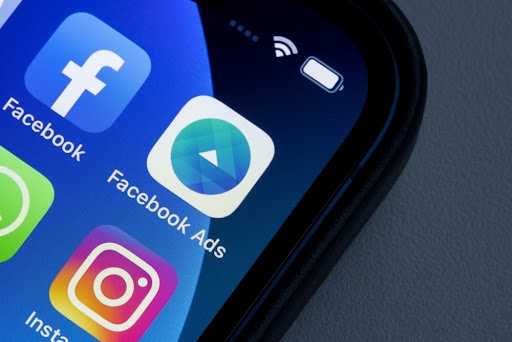More often than not, the success of your paid social campaigns relies on the quality and effectiveness of your creatives. Captivating visuals, compelling copy, and engaging messaging play a crucial role in attracting and converting your customers. To ensure you’re delivering the best possible ads, it’s essential to conduct regular and thorough creative testing. In this step-by-step guide, we’ll explain how to test creatives on three major platforms: Meta, Pinterest, and LinkedIn.
What is creative testing?
Creative testing in paid social refers to the process of experimenting with different ad creatives to determine which ones perform the best in terms of achieving campaign objectives. It involves creating multiple variations of ad visuals, copy, headlines, and call-to-action buttons to assess which combination resonates most effectively with the target audience.
The purpose of creative testing is to optimise ad performance and maximise the return on ad spend (ROAS). By testing different creative elements, advertisers can gather data-driven insights about what resonates with their audience, leading to improved ad engagement, click-through rates (CTRs), conversions, and ultimately, better campaign results.
Here are a few key aspects of creative testing in paid social:
- Variations: create multiple versions of ad creatives with different visuals, messaging, and CTAs. These variations can include different images, videos, ad formats, headlines, ad copy length, or even different colour schemes.
- A/B testing: implement a structured testing approach where you compare two or more variations of the same ad, keeping all other factors (such as targeting, budget, and campaign settings) constant. This helps identify the elements that have the greatest impact on performance.
- Testing objectives: define specific key performance indicators (KPIs) to evaluate the effectiveness of the creative variations. These can include metrics like CTR, conversion rate, cost per acquisition (CPA), engagement rate, or ad relevancy score.
- Test duration: allow sufficient time for each creative variation to gather statistically significant data. Depending on the campaign budget and audience size, it’s important to run tests long enough to obtain reliable results.
- Iterative approach: based on the performance data collected, make data-driven decisions and refine your ad creative strategy. Continuously iterate by testing new variations, optimising top-performing creatives, and eliminating underperforming ones.
- Audience segmentation: test different creative variations across various audience segments to identify if certain visuals or messages resonate better with specific subsets of your target audience. This can help tailor your creatives for different customer segments.
- Creative elements: consider testing different aspects such as images, videos, headlines, ad copy, ad formats, CTAs, landing pages, and even ad placements to uncover the most effective combinations.
By conducting creative testing in paid social, advertisers can identify winning combinations that maxomise ad performance, improve conversion rates, and ultimately drive better results for their campaigns.
The benefits of creative testing
Before diving into the specific testing strategies, let’s emphasise the significance of creative testing and the benefits it brings to your campaigns.
Maximising ad performance
Creative testing allows advertisers to identify the ad variations that generate the best results. By continuously testing and optimising creatives, advertisers can improve CTRs, conversion rates, engagement, and overall campaign performance. This leads to better ROAS and more efficient advertising campaigns.
Research by HubSpot highlights that A/B testing (split testing), can lead to a 25% increase in conversion rates.
Additionally, a study conducted by Facebook found that advertisers who used its dynamic creative feature observed a 17% increase in conversions compared to those who didn’t.
Understanding audience preferences
Different audiences may respond differently to various creative elements. Testing different ad variations helps uncover which visuals, messaging, and CTAs resonate most effectively with specific audience segments. This knowledge allows advertisers to tailor their creatives to better engage and connect with their target audience, resulting in higher engagement and conversion rates.
Overcoming assumptions and biases
Creative testing helps challenge assumptions and biases about what might work best in advertising. It provides empirical evidence and data-driven insights, allowing advertisers to base decisions on actual performance rather than subjective opinions or assumptions.
Continuous improvements
Advertisers can use creative testing as an iterative process to continuously refine and optimise their ad creatives. By analysing performance data and making data-driven decisions, advertisers can identify patterns, uncover new insights, and refine their strategies over time. This leads to continuous improvement and better results.
Cost efficiency
By testing multiple creative variations, advertisers can identify the highest-performing ads and allocate their budget more effectively. This prevents wasted ad spend on underperforming creatives and ensures that resources are directed towards the most impactful ad variations, ultimately increasing the cost efficiency of paid social campaigns.
Staying competitive
In the dynamic landscape of paid social advertising, competitors are also running ad campaigns and vying for audience attention. Creative testing allows advertisers to stay competitive by ensuring their ad creatives remain fresh, relevant, and compelling. Testing enables advertisers to adapt to changing market dynamics and consumer preferences, maintaining a competitive edge.
Meta creative testing
Start with A/B testing
Create two ads, changing a single element such as the headline, image, or call-to-action button. Split your audience into two groups and measure the performance of each variation. Facebook recommends using its Split Testing feature to conduct A/B tests effectively.
Utilise dynamic creative
Meta advertising offers dynamic creative options, allowing you to automatically test multiple elements simultaneously. Experiment with different headlines, images, and descriptions to find the winning combination. DCO has been known to increase ROAS by more than 50%.
Leverage audience insights
Meta’s Audience Insights tool provides valuable data about your target audience’s demographics, interests, and behaviours. You can use this information to tailor your creatives more effectively.
Pinterest creative testing
Pin variation testing
Create multiple variations of your pins by tweaking elements such as images, text overlays, and font styles. Use different Pin titles and descriptions to test which ones resonate best with your audience.
Explore Carousel Pins
Pinterest’s Carousel Pins enable you to showcase multiple images within a single ad. Experiment with different visuals and sequences to see which arrangement generates the most engagement. Carousel Pins often drive increases in click-through rates as opposed to their standard single-image static ads.
Take advantage of Pinterest trends
Use Pinterest Trends to discover popular and trending keywords and topics. Incorporate these into your creatives to increase their visibility and relevance. You’re much more likely to increase your conversion volume by tailoring creatives to Pinterest Trends.
LinkedIn creative testing
Message ad testing
LinkedIn’s different message ad formats, such as conversation ads offer a direct way to engage with your audience. With highly personalised messages and clear call-to-action buttons, you can drive strong relationships with your LinkedIn ads at scale.
Sponsored content testing
LinkedIn has a range of sponsored content formats; carousel, single image, video, and more. Each has their own unique visual, text and call to action nuances, and testing each of these is extremely important – especially on a platform where CPCs and CPMs tend to be so much higher.
A/B test with audience segmentation
LinkedIn allows you to target specific audiences based on criteria like industry, job title, and seniority. Conduct A/B tests with different creatives, tailored to each segment, to identify the most relevant way to speak to the different types of audiences.
Analysing and refining your creatives
Monitor key metrics
Track essential metrics such as click-through rates, conversion rates, and engagement metrics to evaluate the performance of your creatives. Identify trends and patterns that can guide your optimisation efforts. Always look for a statistically significant ‘winner’ of your test before switching creatives over.
Iterate and optimise
Based on the results of your creative testing, refine your ad elements, copy, and visuals. Continuously iterate and optimise to maximise your campaign’s effectiveness. You should be updating your creatives based on product changes, ad fatigue, seasonal requirements, and more!
Leverage retargeting
Use retargeting techniques to reach users who have previously engaged with your ads. Test different retargeting creatives to further enhance conversions. Ensure you have separate creatives and messaging tailored to users who may have seen your content in the past.
Key takeaways
Testing creatives on Meta, Pinterest, and LinkedIn is a key marker of success in any paid social campaign. The tips outlined above will help you to gain insights into your audience’s preferences, help you optimise your ad performance, and importantly, increase your return on investment.
Remember, creative testing is an ongoing process, so don’t hesitate to experiment, iterate, and refine your creatives to achieve the best results. Happy testing!





